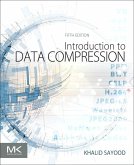This book provides an in-depth exposition of spin-stand microscopy of hard disk data which is a new technique recently developed and extensively tested by the authors of the book. Spin-stand microscopy is the first magnetic imaging technique where imaging is performed ex-situ on a rotating disk mounted on a spin-stand. This technique is one of the fastest scanning-based microscopy techniques. It is non-invasive and has nano-scale resolution. For these reasons, it provides unique capabilities for the visualization of magnetization patterns recorded on hard disks. This book is self-contained and it covers in sufficient details the basic facts of magnetic data storage technology, the principles and theory of spin-stand microscopy, its experimental implementations, as well as its applications in hard disk diagnostics, imaging of overwritten patterns, computer forensics of hard disk files, and data-dependent magnetic thermal relaxations of recorded magnetization patterns. This book will be a valuable reference for the magnetic data storage community, magnetic microscopy professionals as well as engineers and scientists involved in computer data forensics, commercial data recovery, and the design of archival data storage systems.








